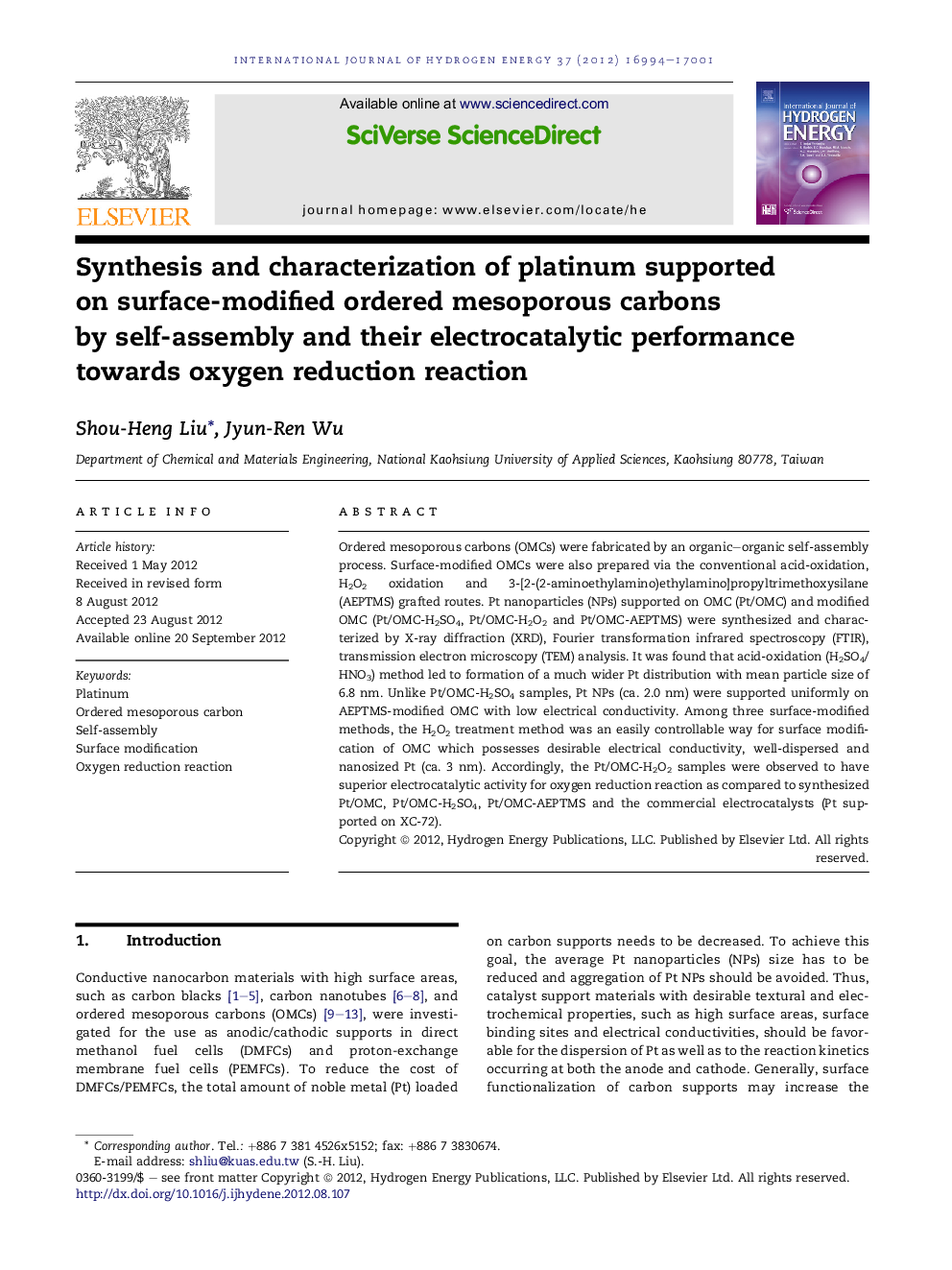| کد مقاله | کد نشریه | سال انتشار | مقاله انگلیسی | نسخه تمام متن |
|---|---|---|---|---|
| 1270881 | 1497547 | 2012 | 8 صفحه PDF | دانلود رایگان |

Ordered mesoporous carbons (OMCs) were fabricated by an organic–organic self-assembly process. Surface-modified OMCs were also prepared via the conventional acid-oxidation, H2O2 oxidation and 3-[2-(2-aminoethylamino)ethylamino]propyltrimethoxysilane (AEPTMS) grafted routes. Pt nanoparticles (NPs) supported on OMC (Pt/OMC) and modified OMC (Pt/OMC-H2SO4, Pt/OMC-H2O2 and Pt/OMC-AEPTMS) were synthesized and characterized by X-ray diffraction (XRD), Fourier transformation infrared spectroscopy (FTIR), transmission electron microscopy (TEM) analysis. It was found that acid-oxidation (H2SO4/HNO3) method led to formation of a much wider Pt distribution with mean particle size of 6.8 nm. Unlike Pt/OMC-H2SO4 samples, Pt NPs (ca. 2.0 nm) were supported uniformly on AEPTMS-modified OMC with low electrical conductivity. Among three surface-modified methods, the H2O2 treatment method was an easily controllable way for surface modification of OMC which possesses desirable electrical conductivity, well-dispersed and nanosized Pt (ca. 3 nm). Accordingly, the Pt/OMC-H2O2 samples were observed to have superior electrocatalytic activity for oxygen reduction reaction as compared to synthesized Pt/OMC, Pt/OMC-H2SO4, Pt/OMC-AEPTMS and the commercial electrocatalysts (Pt supported on XC-72).
► Pt supported surface-modified OMCs were prepared via three different routes.
► ORR activity of Pt/OMC-H2O2 was higher than that of commercial catalysts.
► This may be due to the distinctive properties of Pt/OMC-H2O2 catalysts.
Journal: International Journal of Hydrogen Energy - Volume 37, Issue 22, November 2012, Pages 16994–17001